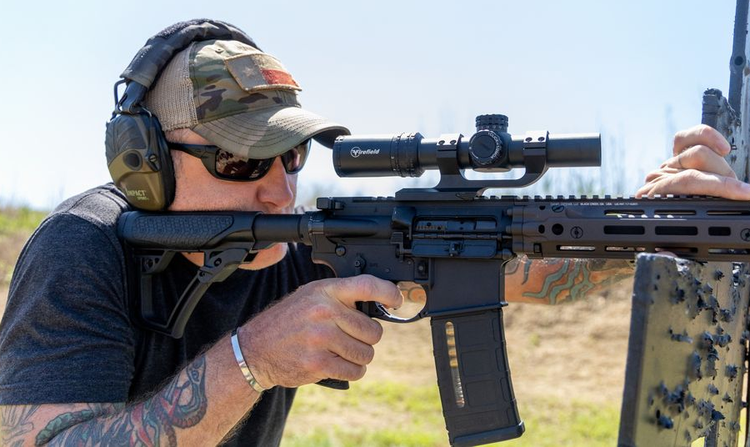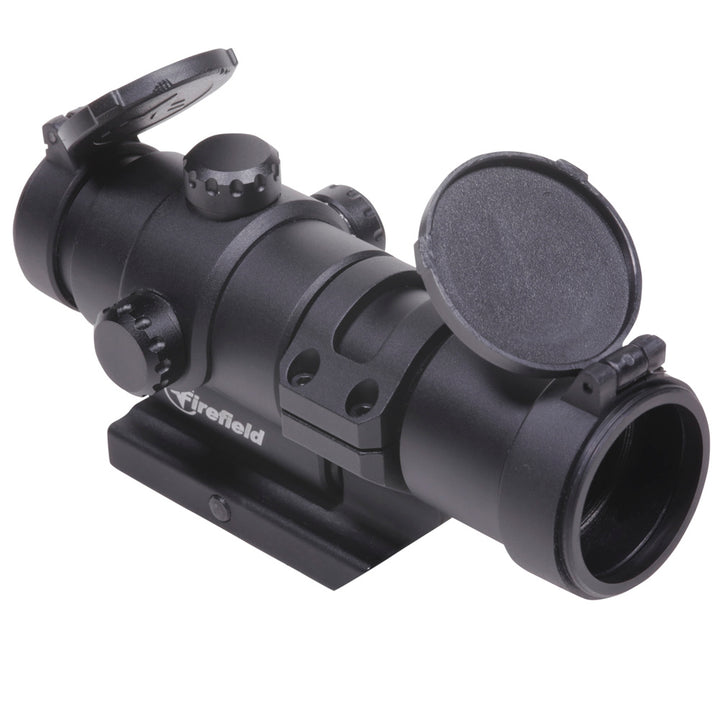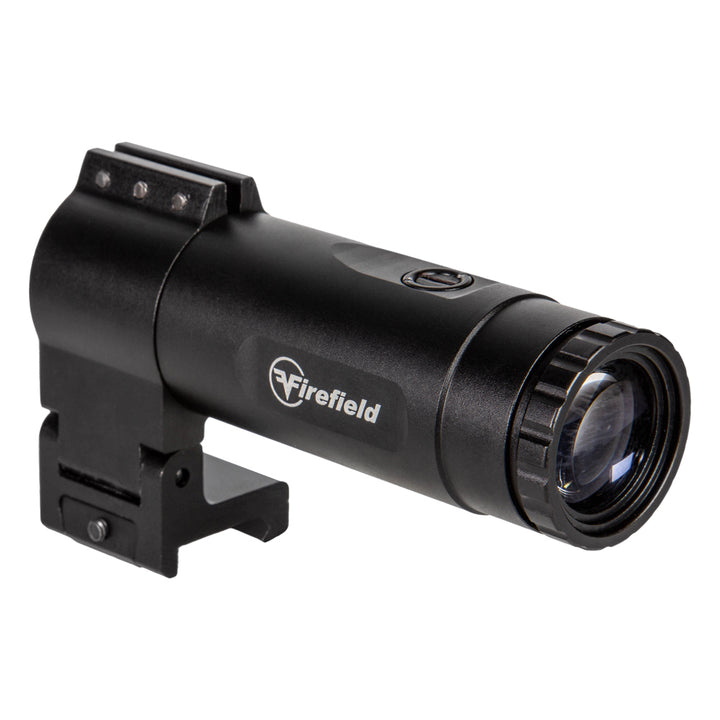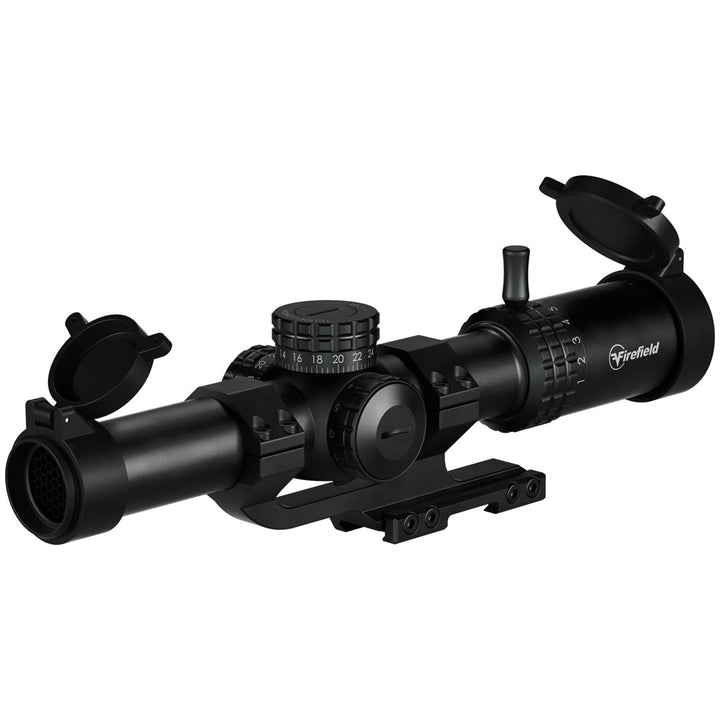Every AR-15 owner eventually asks the same question: What’s the best optic setup for short to mid-range combat? For years, two options have dominated that conversation: the red dot/magnifier combo and the LPVO (Low Power Variable Optic). Both offer versatility, speed, and precision. But which one is better for your rifle, your wallet, and your particular use case?
Red Dot/Magnifier Combo
A red dot + magnifier combo consists of two distinct but complementary optics: a reflex-style red dot sight for fast target acquisition at close range, and a flip-to-side magnifier that provides fixed magnification (usually 3x or 5x) when needed. The red dot offers a crisp, illuminated aiming point that is intuitive and parallax-free, allowing shooters to engage targets quickly with both eyes open. When longer-range shots arise, the user can swing the magnifier into place behind the red dot, instantly enhancing precision without removing or swapping optics. This modular system preserves speed and simplicity while adding a measure of reach, making it ideal for fast-paced environments with unpredictable engagement distances.
Pros:
-
Lightning-fast target acquisition
-
Lightweight and streamlined
-
Ideal for CQB and home defense
-
Simpler manual of arms
-
Less expensive than many LPVOs
Cons:
-
Quick transitions with flip-to-side mechanism take practice
-
No transitional magnification.
-
Magnifier eye relief can be tight
This setup excels in fast-moving environments where weight and speed matter most. For those looking to build around Firefield products, the Diverge 3x Magnifier fits the Impulse 1x28 Red Dot Sight fairly well, creating a streamlined and effective pairing for shooters who want reliable magnification without compromising balance or performance.
What Is an LPVO?
Low Power Variable Optics give you a true 1x base magnification while providing maximum magnifications of 4x, 6x, or even 10x at the high end. This range allows shooters to engage targets at close quarters with both eyes open, then dial in greater magnification for longer-range precision without changing optics. They're popular with competitors who need fast transitions between targets at varied distances, hunters who may need to switch from dense brush to open field shots, and tactical shooters looking for a do-it-all solution that bridges CQB and overwatch roles.
Pros:
-
Wide magnification range covers CQB to 400+ yards
-
Reticle options and brightness settings for varied conditions
-
One-piece design—no flipping or changing optics
Cons:
-
Heavier and bulkier than red dot setups
-
Not quite as fast at true 1x as a reflex sight
-
Generally more expensive than a dot + magnifier combo
The Firefield RapidStrike 1-10x24 offers a compelling all-in-one package, especially for shooters who want flexibility without constantly swapping gear.
Use Case Breakdown
Like any tool, there is no true one size fits all optic. One may enjoy the quick transitions between the red dot and the magnifier, while some others might find the better light transmission through the lens of an LPVO more appealing. Ultimately, the type of short to mid range optic depends on one’s use case
Red Dot + Magnifier:
-
Best for: Home defense, urban engagements, range training
-
Strengths: Speed, simplicity, affordability
-
Limitations: Mid-range performance capped at magnifier’s limit
LPVO (RapidStrike 1-10x24):
-
Best for: Hog hunting, field use, 3-Gun competition
-
Strengths: Precision, magnification flexibility, single-unit solution
-
Limitations: Slightly slower at 1x, heavier setup
Budget and Practicality
You can often get a red dot and magnifier for the price of a mid-grade LPVO alone. But for those wanting everything in one scope, the Firefield RapidStrike 1-10x24 offers outstanding value without breaking the bank.
You get serious capability—1x for CQB, 10x for open fields—plus durability and reliable reticle illumination all in one unit.
Final Verdict
If you're building a lightweight, home-defense-focused rifle or want the absolute fastest setup possible, the red dot + magnifier combo still rules. Our preferred setup is the Firefield Diverge Magnifier paired with the Firefield Impulse 1x28 Red Dot—a tight, reliable combo that offers fast acquisition, crisp magnification, and a compact footprint perfect for real-world defense scenarios.
But if you want a single, do-it-all optic that transitions seamlessly from hallway to hillside, the Firefield RapidStrike 1-10x24 gives you the flexibility of a variable optic in a rugged, affordable platform.
FAQs
1. What are the pros of a Red Dot/Magnifier Combo?
Lightning-fast target acquisition, Lightweight and streamlined, Ideal for CQB and home defense, Simpler manual of arms, Less expensive than many LPVOs
2. What are the cons of a Red Dot/Magnifier Combo?
Quick transitions with flip-to-side mechanism take practice, No transitional magnification, Magnifier eye relief can be tight
3. What is an LPVO?
Low Power Variable Optics give you a true 1x base magnification while providing maximum magnifications of 4x, 6x, or even 10x at the high end.
4. What are the pros of an LPVO?
Wide magnification range covers CQB to 400+ yards, Reticle options and brightness settings for varied conditions, One-piece design—no flipping or changing optics
5. What are the cons of an LPVO?
Heavier and bulkier than red dot setups, Not quite as fast at true 1x as a reflex sight, Generally more expensive than a dot + magnifier combo




